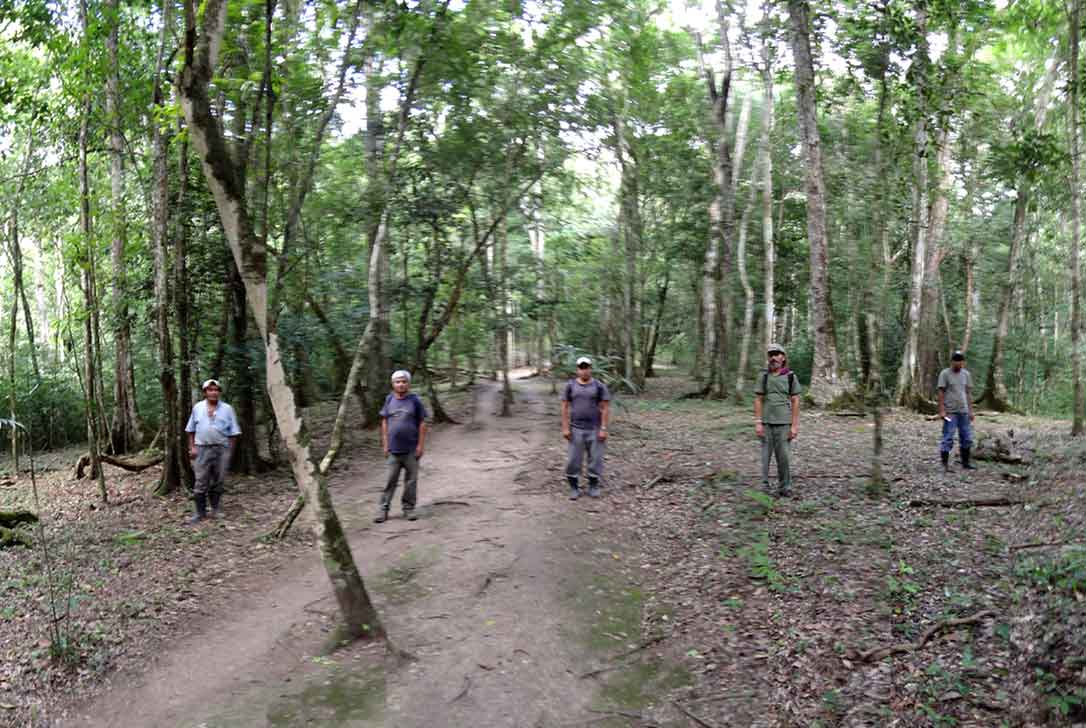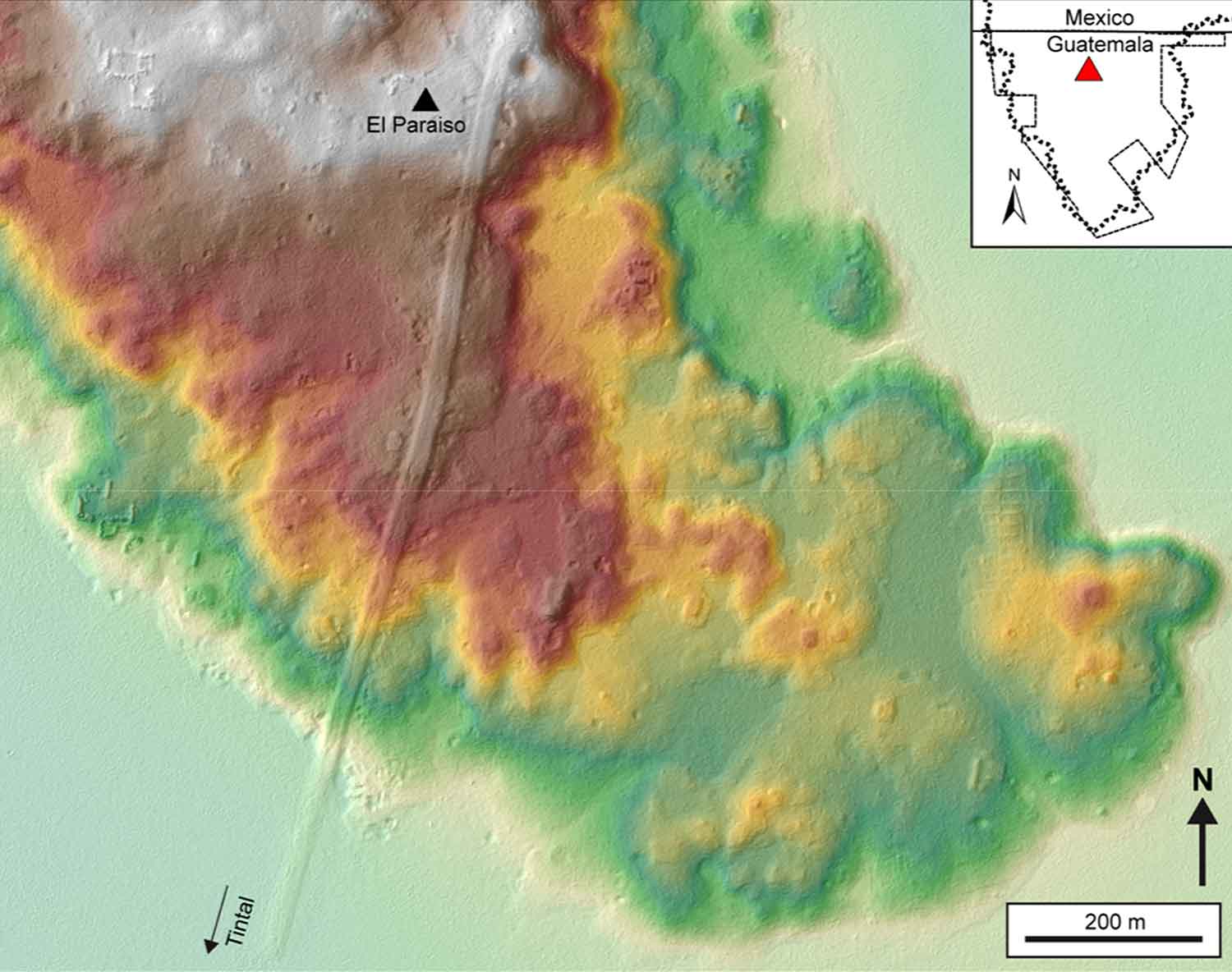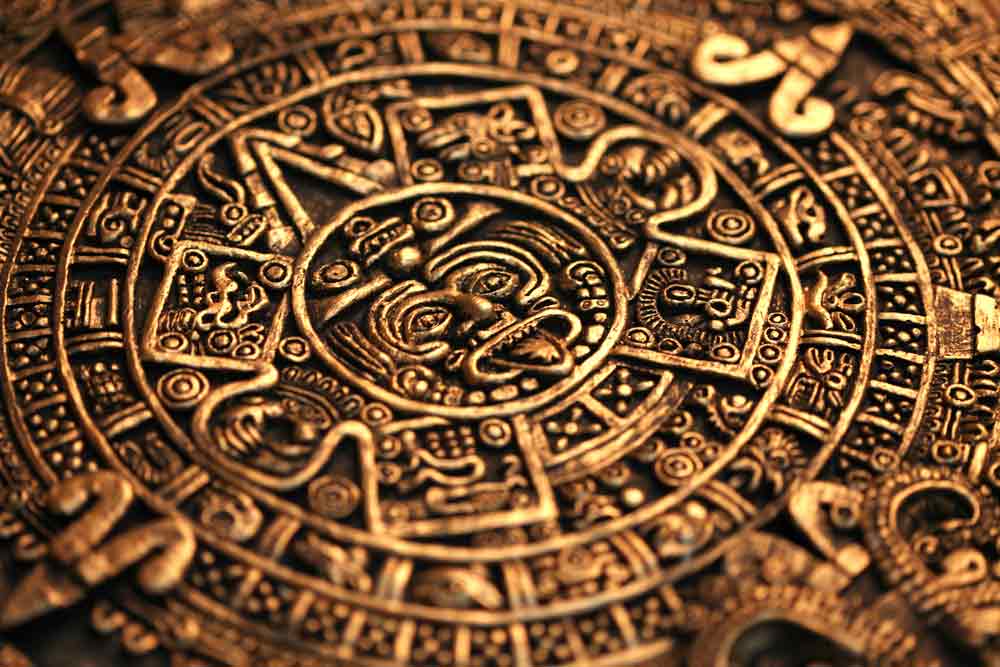Ancient Superhighways
In ancient times, the Maya people built a network of roads that would have allowed them to trade and communicate over long distances.

Hansen, R., Moraels-Aguilar, C., Thompson, J., Ensley, R., Hernandez, E., Schreiner, T., . . . Martinez, G. (2022). LiDAR analyses in the contiguous Mirador-Calakmul Karst Basin, Guatemala. (CC BY 3.0)
This photo shows the location of one of the Maya roads. Researchers found that this road was about 40 meters (131 feet) wide.
Some ancient people were amazingly advanced. Scientists know this because they’ve studied civilizations like the Maya. More than 2,000 years ago, the Maya people of North and Central America built large cities with palaces and pyramids. They were successful farmers. They even studied the planets and came up with an accurate calendar. But a new discovery reveals that the Maya civilization was even more sophisticated than anyone realized. Scientists have learned that the Maya had a system of interconnecting roads.
“[The roads are] the world’s first superhighway system,” Richard Hansen, a professor of anthropology at Idaho State University, told CNN.

Hansen, R., Moraels-Aguilar, C., Thompson, J., Ensley, R., Hernandez, E., Schreiner, T., . . . Martinez, G. (2022). LiDAR analyses in the contiguous Mirador-Calakmul Karst Basin, Guatemala. Ancient Mesoamerica. Cambridge University Press, 2022. (CC BY 3.0)
The Maya causeways, or roads, stretched across vast distances. The darker colors on this map indicate areas of higher elevation.
Hansen led a recent study in which scientists used laser technology to look under the thick canopy of trees in the rainforest of Guatemala. The researchers discovered a 650-square-mile (1,700-square-kilometer) area containing the ruins of hundreds of Maya cities and towns. A system of stone roads—called sacbeob (“white roads”) in the Mayan language—connects these cities and towns. The roads are made of mud and stone and covered with a layer of white plaster that reflects moonlight, making the surface easier to see at night in a dark jungle.

Hansen, R., Moraels-Aguilar, C., Thompson, J., Ensley, R., Hernandez, E., Schreiner, T., . . . Martinez, G. (2022). LiDAR analyses in the contiguous Mirador-Calakmul Karst Basin, Guatemala. Ancient Mesoamerica. Cambridge University Press, 2022. (CC BY 3.0)
Laser technology showed scientists where the Maya people built roads.
The size of the road network reveals a lot about the Maya civilization. In many ways, it was modern. Building the roads would have required complicated plans as well as cooperation between cities and towns. And the roads’ existence means there would have been a lot of travel and communication between towns.





